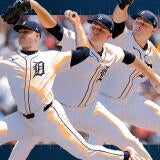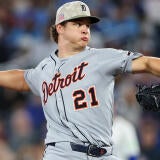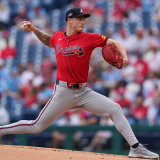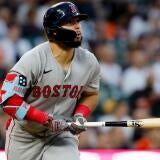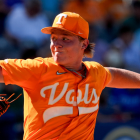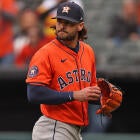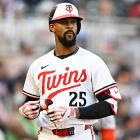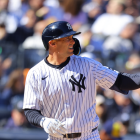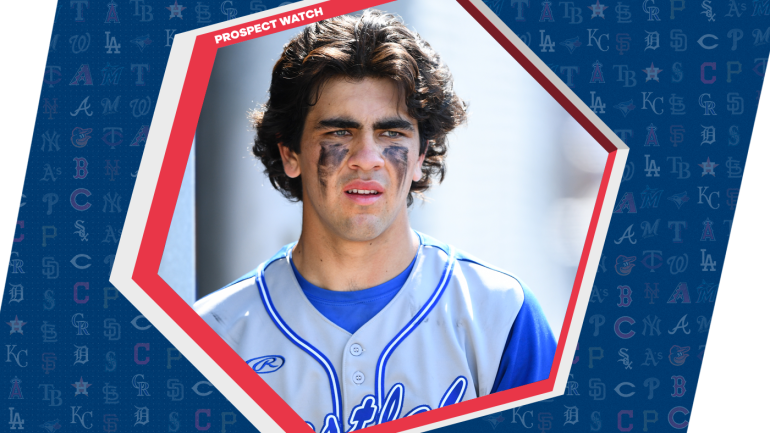
Major League Baseball's first-year amateur player draft is set to begin on Sunday. The Pittsburgh Pirates will make the No. 1 selection for the fifth time in their franchise history. Previously, the Pirates have used that spot to pick shortstop Jeff King (1986) and right-handers Kris Benson (1996), Bryan Bullington (2002), and Gerrit Cole (2011). Who will join that group in a fortnight's time?
This week's Prospect Watch is dedicated to answering that question by breaking down the four most realistic candidates. Do note that the candidates are listed in ascending order of their perceived likelihood to go number one.
4. Jack Leiter, RHP, Vanderbilt
The case for him: Leiter, the top pitcher in the class, comes complete with certainty and upside. He has a high-grade fastball and promising (if inconsistent) secondaries, and he receives an abundance of credit for his work ethic and his bloodlines. (His father, uncle, and cousin each pitched in the majors.) Leiter also has the benefit of having performed well against SEC-caliber competition: in 21 career outings, he posted a 2.03 ERA and a 3.86 strikeout-to-walk ratio. That's a hard profile to beat.
The case against him: Get used to seeing this word: money. Leiter has an exceptional amount of leverage for a draft prospect, borne from his father's financial earnings and his own eligibility (he's a draft-eligible sophomore). If Leiter wants to push himself to a more favorable position down the board with a sky-high bonus demand, then he's specially equipped to do so.
3. Jordan Lawlar, SS, Dallas Jesuit High School (TX)
The case for him: Lawlar is arguably the top hitter in the draft, and perhaps the best overall prospect. He draws comparisons to Royals prospect Bobby Witt Jr. because they each hail from Texas, they each were a little old for a prep prospect (he's 19), and they each have star upside. Lawlar could well finish his development with three or more plus tools, including enough glove to stick at the shortstop position for the immediate future.
The case against him: The Pirates might be concerned that the gray-haired Lawlar won't fit into their window -- no, no; it's about the green stuff. Lawlar has publicly touted his commitment to Vanderbilt, which tends to be a way of priming the pump for a high bonus ask. Lawlar is expected to sign with someone anyway, but the Pirates might pass as part of a strategic play.
2. Henry Davis, C, Louisville
The case for him: Two-way catchers are always in high demand and low supply; Davis, who hit .370/.482/.663 with 15 home runs and seven more walks than strikeouts this season, looks like he could become just that. He's at least an adequate defender with a very strong arm behind the plate. At the plate, he has a low swing-and-miss rate and a high average exit velocity. That's always an enticing combination, and it helps to explain his ascent.
1. Marcelo Mayer, SS, Eastlake High School (CA)
The case for him: Likewise, two-way shortstops are always coveted. Mayer is a smooth defender who is all but certain to remain at the position for the long haul. Offensively, those who like him believe he could homer 15-plus times a season from the left side while also hitting for a high average. Mayer doesn't have great speed, but it almost doesn't matter given the rest of his profile.
The case against Mayer (and Davis): We're combining the cases against Davis and Mayer because they're intertwined. Sure, there are some baseball reasons working against either -- some scouts have reservations about Davis' swing; not everyone thinks Mayer will hit for a ton of power -- but the decision between the two likely hinges on (what else?) the financial component.
The Pirates have the largest bonus pool in the draft, at $14.39 million. Nearly 60 percent of that figure is tied to the No. 1 pick. If the Pirates can get one of the above players, likely either Davis or Mayer, to agree to an underslot deal, then they can use the savings to hand out overslot deals later in the draft, including at picks 37, 64, and/or 72. By doing so, the Pirates could land a premium talent who has slipped because of injury or signability concerns.
This is, essentially, the same portfolio approach that teams like the Houston Astros and Baltimore Orioles have used in recent years.
The Astros famously redirected the savings from drafting Carlos Correa No. 1 in 2012 (he signed for $1.2 million less than Byron Buxton) toward Lance McCullers Jr. and Rio Ruiz. Just last year, the Orioles used the No. 2 pick on Heston Kjerstad, then signed him to the seventh-largest bonus of the first round. They ended up handing out four other seven-figure bonuses, including to late-round picks like Coby Mayo and Carter Baumler.
There's an argument to be made that teams picking No. 1 in the draft should simply take the best player available, but that argument loses luster if the team has multiple players evaluated as being equal. If that's the case here -- and no one outside of the Pirates front office can say for certain -- then turning this into a math problem, or at least a question of who'll take the least money to sign, is a sensible approach that could pay dividends for the Pirates.
Based on that and what we know of the players, it seems more likely than not that either Mayer or Davis will be this year's No. 1 pick.
![[object Object] Logo](https://sportshub.cbsistatic.com/i/2020/04/22/e9ceb731-8b3f-4c60-98fe-090ab66a2997/screen-shot-2020-04-22-at-11-04-56-am.png)



